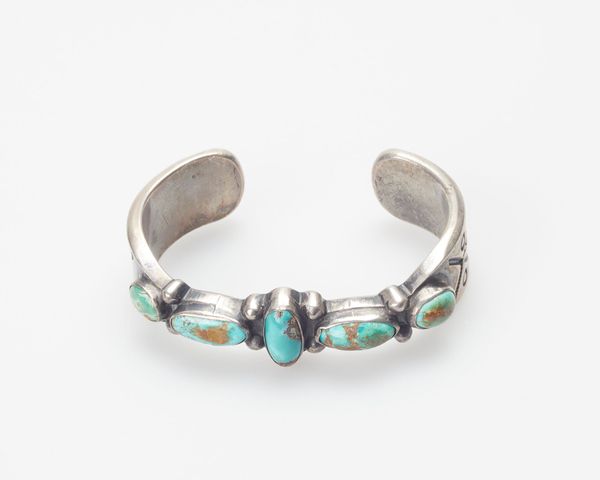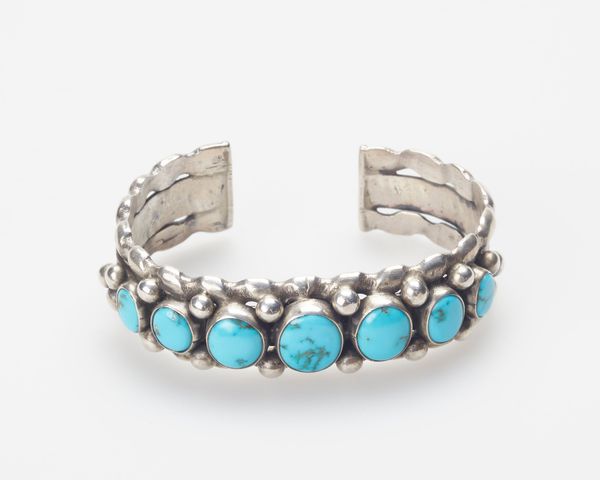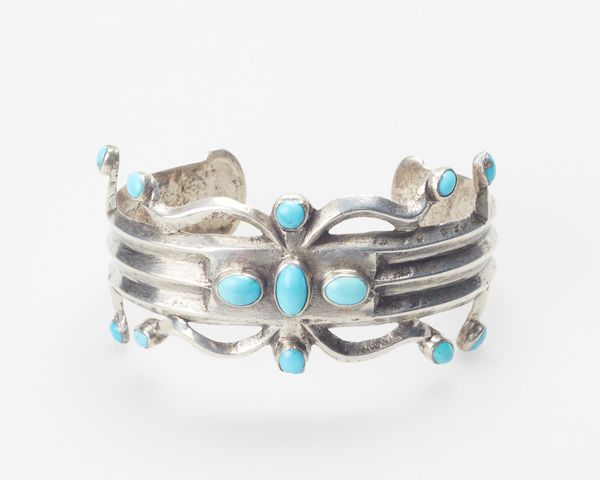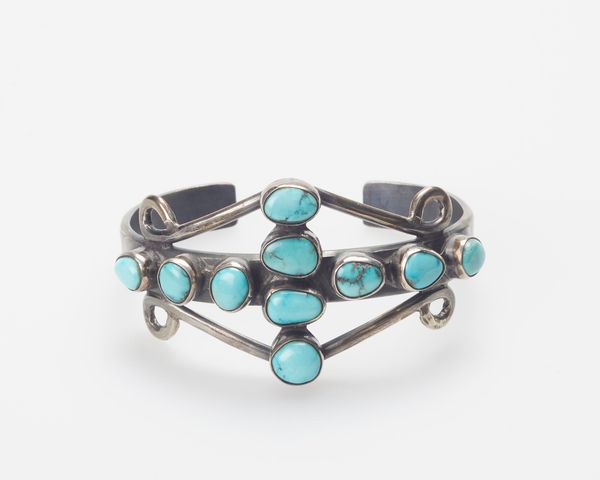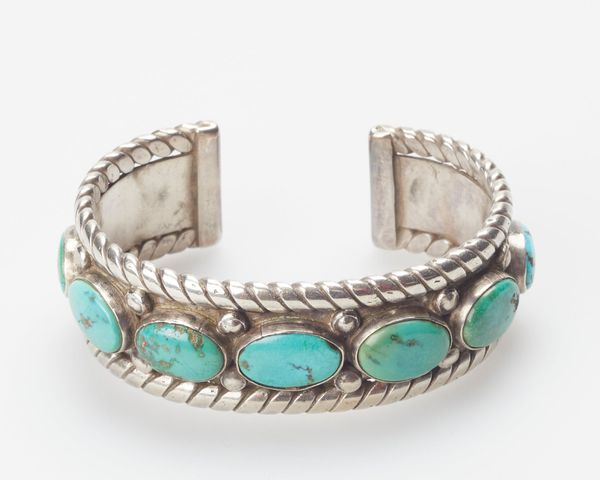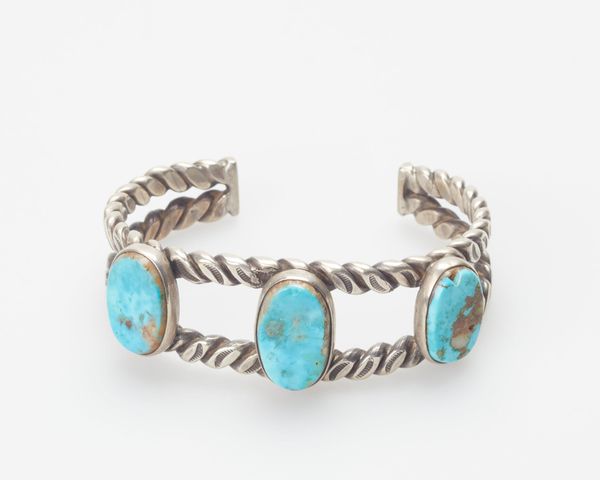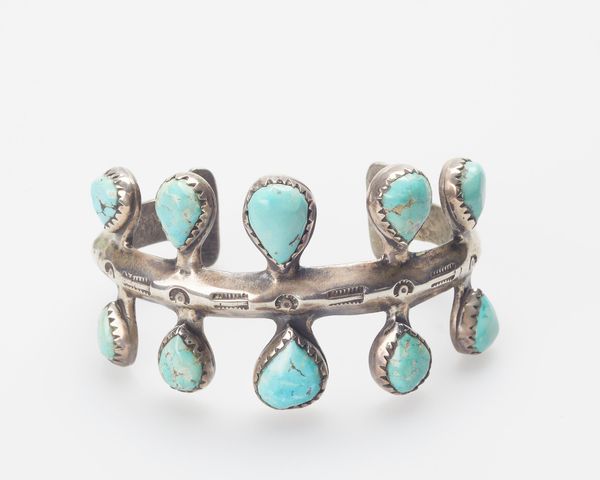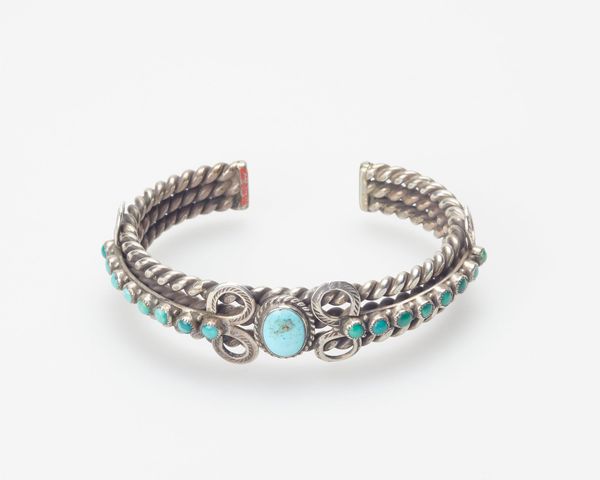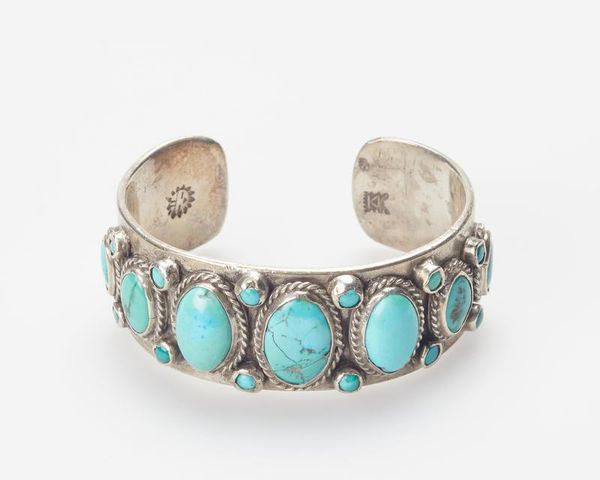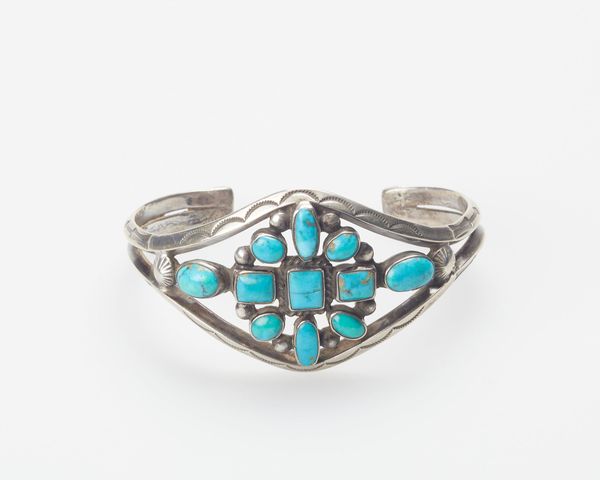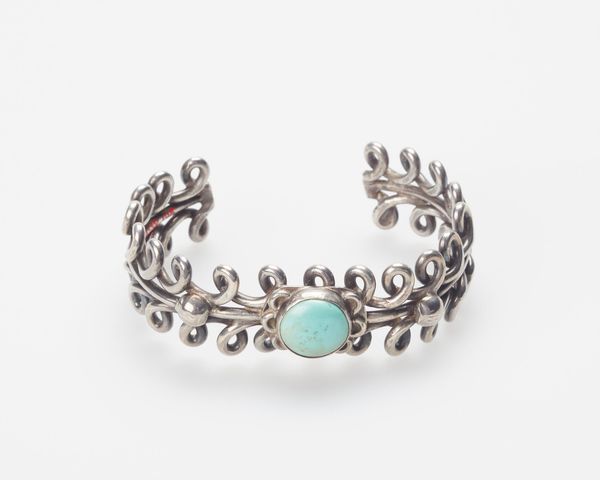
silver, metal
#
silver
#
metal
#
indigenous-americas
Dimensions: 2 1/2 x 3/4 in. (6.4 x 1.9 cm)
Copyright: Public Domain
Curator: Here we have a Navajo bracelet, likely made around 1950, composed of silver and inlaid with beautiful turquoise stones. It has such a cool vintage look. What strikes you about this piece? Editor: I'm drawn to the arrangement of the stones, and the texture of the silver—it’s obviously handmade. It feels quite different from a lot of mass-produced jewelry. How does the construction affect its cultural significance? Curator: That’s a crucial observation! Thinking materialistically, consider the source of the silver itself. What did the Navajo, or Diné, have to do to acquire and transform it? This wasn’t some readily available material. And what about the turquoise, often traded across vast distances? Editor: So, it’s not just about the aesthetics but the whole network of extraction, labor, and exchange that brought the materials together? Curator: Exactly! It is all about these networks. The hammering and shaping of the silver, the setting of the stones, each step reflects labor, skill, and, importantly, a relationship to resources often dictated by colonial power structures. The stones aren't just decoration, they are carriers of cultural meanings. Think about trade and access to tools, which all factor into the final product. Editor: I hadn't considered it that way. Now, I’m wondering about the market this bracelet was intended for, who would buy and wear this? Curator: Good question. By 1950, the market for Navajo jewelry had shifted from primarily internal use to a booming tourist trade. This meant adjusting designs, speeding up production, and navigating a complex relationship with traders who controlled access to materials and markets. It's not just "art," it’s evidence of cultural adaptation and economic negotiation. Editor: That's so fascinating, viewing this piece through the lens of material culture and the economic realities of its production changes everything. I’ll never look at a piece of jewelry the same way. Curator: Indeed, seeing art through the lens of materials and labor reveals a much richer story. We must think beyond just the aesthetic impression, which tells you a great deal about cultural values and historical trade and labor relationships.
Comments
No comments
Be the first to comment and join the conversation on the ultimate creative platform.
